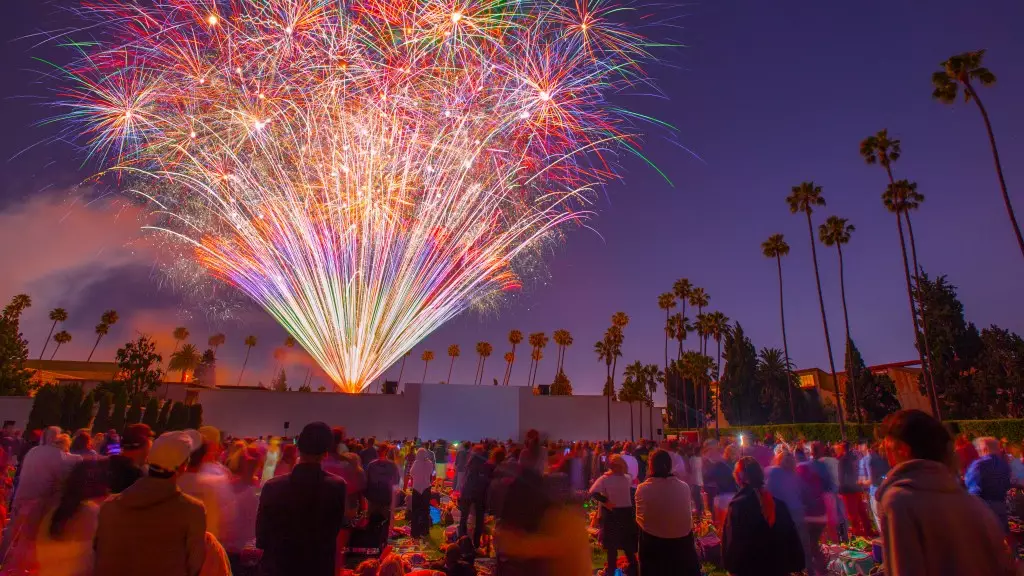As Los Angeles plunges into another blistering summer, the city finds itself in an unsettling dichotomy—a vibrant cultural landscape juxtaposed with simmering tensions. The recent protests linked to ICE raids have underscored the ongoing national crisis regarding immigration, a policy that divides communities and highlights the distressing inequalities that this grand city harbors. The dissonance of such activism against the backdrop of sun-soaked streets and the laughter of joyous gatherings exposes a deeper unease in the heart of California’s entertainment capital.
While both sides of Los Angeles are at war with one another, cultural opportunities abound. One such initiative is Cinespia’s unique film screenings at the Hollywood Forever Cemetery, artfully blending cinema with a venue as poignant as it is beautiful. Creative director Navid Sinaki has eloquently framed this experience as one that transcends mere entertainment. His sentiment of the cemetery being a “happy place” resonates through the community-focused lens that he and Cinespia strive to foster amidst a backdrop of unrest. Here, art is a unifying force, providing a much-needed escape in an increasingly tumultuous environment.
Film as a Reflection of Society
However, the question remains—does celebrating films like Paul Verhoeven’s NC-17 classic *Showgirls* trivialize the very real struggles that define present-day Los Angeles? The allure of the cinematic experience can be intoxicating, but in times of social upheaval, it risks becoming a mere distraction. Sinaki admits that he shoulders a “revelatory responsibility” when selecting films to showcase, recognizing how these choices can shape narratives and foster community.
One cannot help but wonder whether the electric atmosphere created during these screenings serves as an opiate for the masses or a true celebration of resilience. The prospect of an “unabashed party” in a cemetery, while appealing in its absurdity, strips the location of its significance. Is it appropriate to engage in revelry when the air carries the weight of protest? The subsequent energy following such films, as Sinaki notes, is perhaps a microcosm of the struggle inherent to Los Angeles itself.
A Tipping Point for Political Action
Recent events, especially those punctuated by a curfew imposed by Mayor Karen Bass and the potentially draconian response from the federal government, are signals of a city at a tipping point. Governor Gavin Newsom has vehemently criticized these intrusions by President Trump, framing them as an assault on local governance and an undermining of civil rights. The intent behind sending troops—a measure reminiscent of martial law—carries with it an alarming precedent that weighs heavily on the fabric of democracy itself.
Is Los Angeles meant to endure this relentless balancing act between governance and creativity? The peaceful assembly of citizens to express dissent stands in stark contrast to an administration that displays an alarming lack of consideration for local sentiments. The involvement of the National Guard, deemed necessary by Trump, raises further questions about who truly controls the narrative in a city underscored by creativity yet strangled by sociopolitical turmoil.
As residents gather to watch a film—or to protest—what does it mean to engage in such public acts in a city that seems forever on the edge? The energy crackling through urban spaces is palpable, yet it beckons for deeper understanding. Residents of Los Angeles are not just viewers or participants; they are active players in a narrative that defines future civic engagement, social justice, and the ongoing fight against oppression.
A Call for Transformation
In navigating the complex landscape of Los Angeles during this summer of contradictions, one might find that the dualities of celebration and protest do not need to remain at odds. Instead, they can coexist, most potently symbolized by initiatives like Cinespia that offer space for community reflection and solidarity. Los Angeles can—indeed must—seize this moment to emerge from its historical enclaves of division and foster a dynamic that embraces both art and activism.
With a duty to reclaim narrative power, Angelenos are faced with the obligation to contribute to both artistic and public dialogues. It’s not just about finding solace in the glow of a movie screen; it’s about channeling these shared experiences towards a greater purpose—transforming anger into action, frustration into solidarity, and apathy into engagement. The heart of Los Angeles beats steadily but shallows if it does not commit to collective change and recognition of the struggles intertwined with its cultural fabric.



Leave a Reply